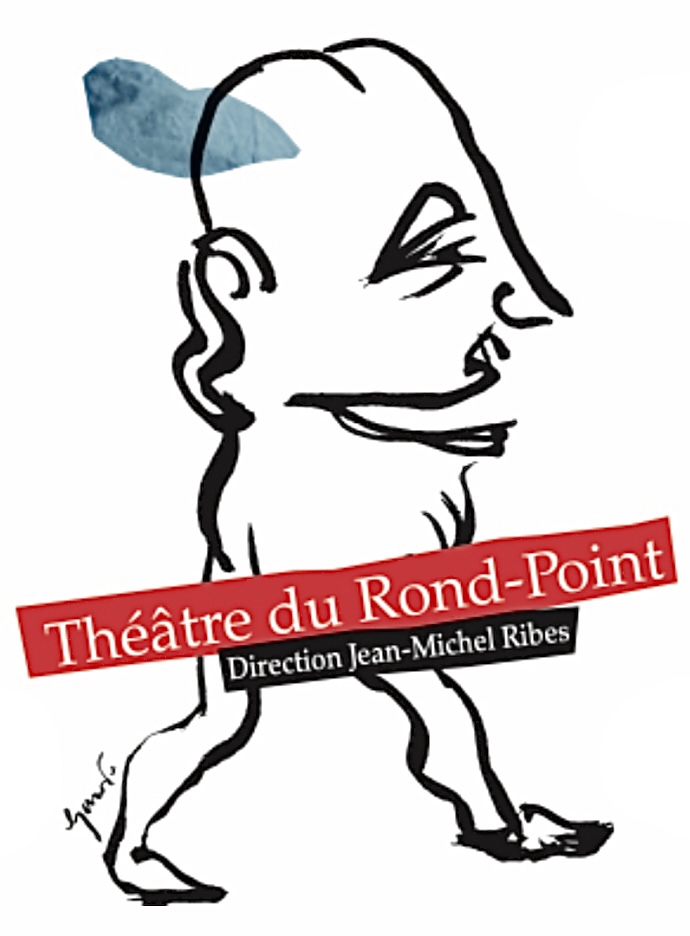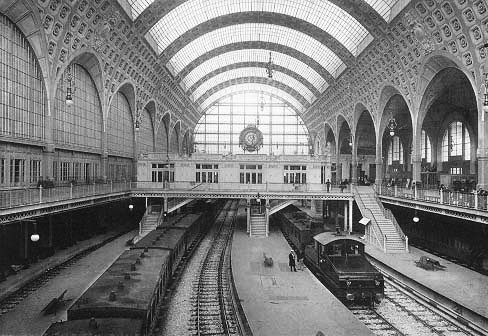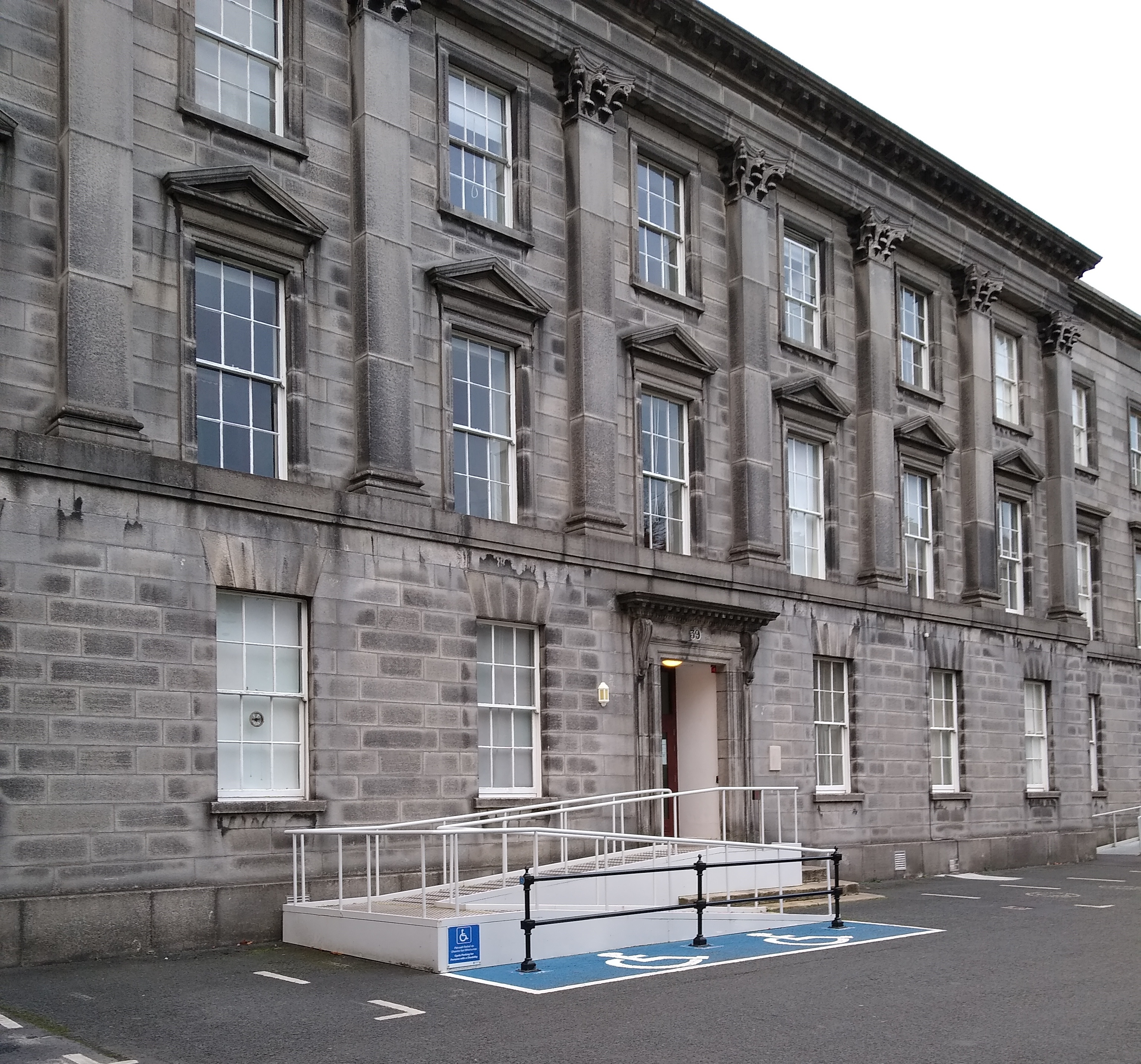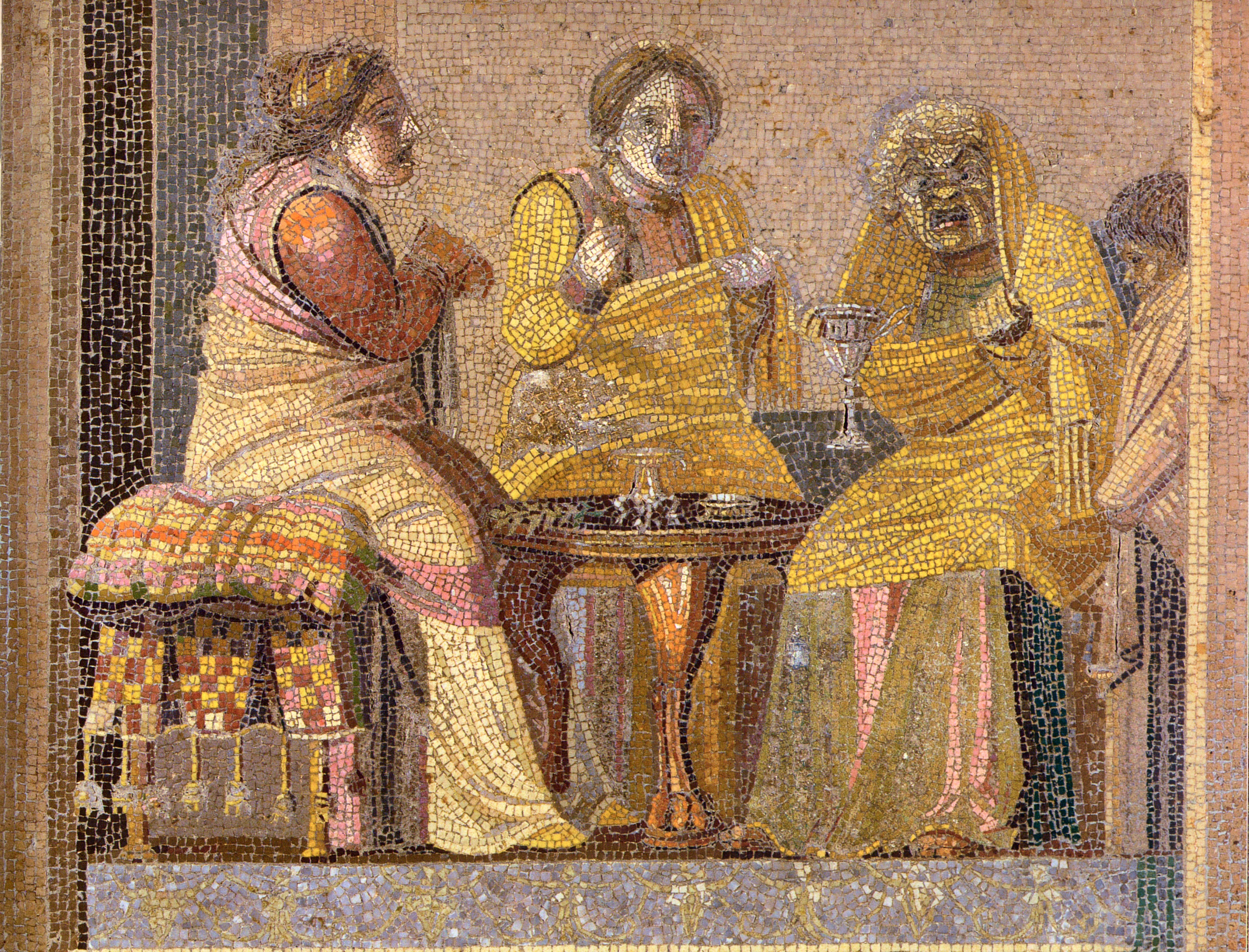|
Théâtre Du Rond-Point
The Théâtre du Rond-Point is a theatre in Paris, located at 2bis avenue Franklin-D.-Roosevelt, 8th arrondissement. History The theatre began with an 1838 project of architect Jacques Ignace Hittorff for a rotunda in the Champs Elysees. Inaugurated in 1839, this structure was integrated with other Hittorff buildings for the Exposition Universelle (1855) and destroyed the following year. A new replacement panorama, Le Panorama National, was designed by architect Gabriel Davioud at the corner of the Avenue d'Antin (now Avenue Franklin D. Roosevelt) and the Champs-Élysées. In December 1893, the rotunda became the Palais de Glace (Ice Palace), one of the most popular attractions of Belle Epoque Paris. In the post-war years, the Theatre du Rond-Point was one of the principal venues—along with the Theatre Marigny and the Theatre de l'Odeon—where the Madeleine Renaud-Jean-Louis Barrault Company introduced the world to many of the plays of Jean Giraudoux, Eugène Ionesc ... [...More Info...] [...Related Items...] OR: [Wikipedia] [Google] [Baidu] |
Theatre
Theatre or theater is a collaborative form of performing art that uses live performers, usually actors or actresses, to present the experience of a real or imagined event before a live audience in a specific place, often a stage. The performers may communicate this experience to the audience through combinations of gesture, speech, song, music, and dance. Elements of art, such as painted scenery and stagecraft such as lighting are used to enhance the physicality, presence and immediacy of the experience. The specific place of the performance is also named by the word "theatre" as derived from the Ancient Greek θέατρον (théatron, "a place for viewing"), itself from θεάομαι (theáomai, "to see", "to watch", "to observe"). Modern Western theatre comes, in large measure, from the theatre of ancient Greece, from which it borrows technical terminology, classification into genres, and many of its themes, stock characters, and plot elements. Theatre artist Patr ... [...More Info...] [...Related Items...] OR: [Wikipedia] [Google] [Baidu] |
Madeleine Renaud
Lucie Madeleine Renaud (; 21 February 1900 – 23 September 1994) was a French actress best remembered for her work in the theatre. She did though appear in several films directed by Jean Grémillon including '' Remorques'' (''Stormy Waters'', 1941) and ''Lumière d'été'' (''Summer Light'', 1943). Personal life Renaud had a son, Jean-Pierre Granval (10 December 1923 – 28 May 1998), by her first marriage to Charles Granval. In 1940, Renaud married her second husband, actor-director Jean-Louis Barrault (1910 – 1994). They remained married until his death in 1994. She died the same year. The couple acted together and co-founded a number of theater companies, touring extensively throughout North and South America. Selected filmography * ''Vent debout'' (1923) * ''La Terre qui meurt'' (1927) - Roussille Lumineau * ''Jean de la Lune'' (1929) - Marceline * ''Serments'' (1931) - Maria * '' Mistigri'' (1931) - Nell 'Mistigri' Marignan * ''La couturière de Lunéville'' (19 ... [...More Info...] [...Related Items...] OR: [Wikipedia] [Google] [Baidu] |
Theatres In Paris
Theatre or theater is a collaborative form of performing art that uses live performers, usually actors or actresses, to present the experience of a real or imagined event before a live audience in a specific place, often a stage. The performers may communicate this experience to the audience through combinations of gesture, speech, song, music, and dance. Elements of art, such as painted scenery and stagecraft such as lighting are used to enhance the physicality, presence and immediacy of the experience. The specific place of the performance is also named by the word "theatre" as derived from the Ancient Greek θέατρον (théatron, "a place for viewing"), itself from θεάομαι (theáomai, "to see", "to watch", "to observe"). Modern Western theatre comes, in large measure, from the theatre of ancient Greece, from which it borrows technical terminology, classification into genres, and many of its themes, stock characters, and plot elements. Theatre artist Patrice Pav ... [...More Info...] [...Related Items...] OR: [Wikipedia] [Google] [Baidu] |
Jean-Michel Ribes
Jean-Michel Ribes (born 15 December 1946, in Paris) is a French playwright, screenwriter, theatre director, film maker and actor. Since 2002 he has been the managing director of the Théâtre du Rond-Point. Between 1982 and 1984 Ribes had directed ''Merci Bernard'' and since 1988 works on ''Palace''. In 2008, Ribes had directed ''Batailles'' which he co-wrote with Roland Topor and next year became a director of the ''Un garçon impossible'', a play by Petter S. Rosenlund and 's ''Les Diablogues''. In 2010, in Théâtre du Rond-Point he directed ''Les Nouvelles Brèves de Comptoir'' in which Jean-Marie Gourio had starred. In 2011, he wrote and directed ''René l’énervé - Opéra bouffe et tumultueux'', on the music by Reinhardt Wagner. A year later, he returned to Théâtre du Rond-Point at which he directed play ''Théâtre sans animaux'' and Sébastien Thiéry's '' L’Origine du Monde'' in 2013. Theater Filmography *1978: '' The Swindle'' *1986: ''La galette du roi'' * ... [...More Info...] [...Related Items...] OR: [Wikipedia] [Google] [Baidu] |
Gare D'Orsay
Gare d'Orsay is a former Paris railway station and hotel, built in 1900 to designs by Victor Laloux, Lucien Magne and Émile Bénard; it served as a terminus for the Chemin de Fer de Paris à Orléans (Paris–Orléans Railway). It was the first electrified urban terminal station in the world, opened 28 May 1900, in time for the 1900 Exposition Universelle. After closure as a station, it reopened in December 1986 as the Musée d'Orsay, an art museum. The museum is currently served by the RER station of the same name. History The site was occupied by the , intended for the Council of State. It was begun in 1810 but not completed until 1840, when its ground floor was occupied by the Council. In 1842 the Cour des Comptes was housed in the first floor. After the fall of the French Second Empire in 1870, the Paris Commune briefly took power from March through May 1871. The archives, library and works of art were removed to Palace of Versailles and eventually both the ''Conseil ... [...More Info...] [...Related Items...] OR: [Wikipedia] [Google] [Baidu] |
Samuel Beckett
Samuel Barclay Beckett (; 13 April 1906 – 22 December 1989) was an Irish novelist, dramatist, short story writer, theatre director, poet, and literary translator. His literary and theatrical work features bleak, impersonal and Tragicomedy, tragicomic experiences of life, often coupled with black comedy and Literary nonsense, nonsense. It became increasingly Minimalism, minimalist as his career progressed, involving more aesthetic and linguistic experimentation, with techniques of repetition and self-reference. He is considered one of the last Modernism, modernist writers, and one of the key figures in what Martin Esslin called the Theatre of the Absurd. A resident of Paris for most of his adult life, Beckett wrote in both French and English. During the Second World War, Beckett was a member of the French Resistance group Gloria SMH (Réseau Gloria). Beckett was awarded the 1969 Nobel Prize in Literature "for his writing, which—in new forms for the novel and drama—in the de ... [...More Info...] [...Related Items...] OR: [Wikipedia] [Google] [Baidu] |
Jean Anouilh
Jean Marie Lucien Pierre Anouilh (; 23 June 1910 – 3 October 1987) was a French dramatist whose career spanned five decades. Though his work ranged from high drama to absurdist farce, Anouilh is best known for his 1944 play ''Antigone'', an adaptation of Sophocles' classical drama, that was seen as an attack on Marshal Pétain's Vichy government. His plays are less experimental than those of his contemporaries, having clearly organized plot and eloquent dialogue. One of France's most prolific writers after World War II, much of Anouilh's work deals with themes of maintaining integrity in a world of moral compromise. Life and career Early life Anouilh was born in Cérisole, a small village on the outskirts of Bordeaux, and had Basque ancestry. His father, François Anouilh, was a tailor, and Anouilh maintained that he inherited from him a pride in conscientious craftmanship. He may owe his artistic bent to his mother, Marie-Magdeleine, a violinist who supplemented the family' ... [...More Info...] [...Related Items...] OR: [Wikipedia] [Google] [Baidu] |
Eugène Ionesco
Eugène Ionesco (; born Eugen Ionescu, ; 26 November 1909 – 28 March 1994) was a Romanian-French playwright who wrote mostly in French, and was one of the foremost figures of the French avant-garde theatre in the 20th century. Ionesco instigated a revolution in ideas and techniques of drama, beginning with his "anti play", '' The Bald Soprano'' which contributed to the beginnings of what is known as the Theatre of the Absurd, which includes a number of plays that, following the ideas of the philosopher Albert Camus, explore concepts of absurdism. He was made a member of the Académie française in 1970, and was awarded the 1970 Austrian State Prize for European Literature, and the 1973 Jerusalem Prize. Biography Ionesco was born in Slatina, Romania, to a Romanian father belonging to the Orthodox Christian church and a mother of French and Romanian heritage, whose faith was Protestant (the faith into which her father was born and to which her originally Greek Orthodox Chri ... [...More Info...] [...Related Items...] OR: [Wikipedia] [Google] [Baidu] |
Jean Giraudoux
Hippolyte Jean Giraudoux (; 29 October 1882 – 31 January 1944) was a French novelist, essayist, diplomat and playwright. He is considered among the most important French dramatists of the period between World War I and World War II. His work is noted for its stylistic elegance and poetic fantasy. Giraudoux's dominant theme is the relationship between man and woman—or in some cases, between man and some unattainable ideal. Biography Giraudoux was born in Bellac, Haute-Vienne, where his father, Léger Giraudoux, worked for the Ministry of Transport. Giraudoux studied at the Lycée Lakanal in Sceaux and upon graduation traveled extensively in Europe. After his return to France in 1910, he accepted a position with the Ministry of Foreign Affairs. With the outbreak of World War I, he served with distinction and in 1915 became the first writer ever to be awarded the wartime Legion of Honour. He married in 1918 and in the subsequent inter-war period produced the major ... [...More Info...] [...Related Items...] OR: [Wikipedia] [Google] [Baidu] |
Jean-Louis Barrault
Jean-Louis Bernard Barrault (; 8 September 1910 – 22 January 1994) was a French actor, director and mime artist who worked on both screen and stage. Biography Barrault was born in Le Vésinet in France in 1910. His father was 'a Burgundian pharmacist who died in the First World War.':87 He studied at the Collége Chaptal until 1930, when he began his studies at the École du Louvre.:87 Theatre From 1931 to 1935 Barrault studied and acted at Charles Dullin's ''L'Atelier''.:32 His first performance was a small role in Ben Jonson's ''Volpone''. At the time, Barrault was unable to afford rent and Dullin allowed him to sleep in the theatre on Volpone's bed.:16 It was ''L'Atelier'' that he first met and studied under Étienne Decroux,:41 with whom he would create the pantomime ''La Vie Primitive'' in 1931.:87 He was a member of the Comédie-Française from 1942 to 1946, performing lead roles in Shakespeare's ''Hamlet'' and Corneille's ''Le Cid.'':32 He and his wife, actres ... [...More Info...] [...Related Items...] OR: [Wikipedia] [Google] [Baidu] |
Theatre De L'Odeon
Theatre or theater is a collaborative form of performing art that uses live performers, usually actors or actresses, to present the experience of a real or imagined event before a live audience in a specific place, often a stage. The performers may communicate this experience to the audience through combinations of gesture, speech, song, music, and dance. Elements of art, such as painted scenery and stagecraft such as lighting are used to enhance the physicality, presence and immediacy of the experience. The specific place of the performance is also named by the word "theatre" as derived from the Ancient Greek θέατρον (théatron, "a place for viewing"), itself from θεάομαι (theáomai, "to see", "to watch", "to observe"). Modern Western theatre comes, in large measure, from the theatre of ancient Greece, from which it borrows technical terminology, classification into genres, and many of its themes, stock characters, and plot elements. Theatre artist Patric ... [...More Info...] [...Related Items...] OR: [Wikipedia] [Google] [Baidu] |
France
France (), officially the French Republic ( ), is a country primarily located in Western Europe. It also comprises of overseas regions and territories in the Americas and the Atlantic, Pacific and Indian Oceans. Its metropolitan area extends from the Rhine to the Atlantic Ocean and from the Mediterranean Sea to the English Channel and the North Sea; overseas territories include French Guiana in South America, Saint Pierre and Miquelon in the North Atlantic, the French West Indies, and many islands in Oceania and the Indian Ocean. Due to its several coastal territories, France has the largest exclusive economic zone in the world. France borders Belgium, Luxembourg, Germany, Switzerland, Monaco, Italy, Andorra, and Spain in continental Europe, as well as the Netherlands, Suriname, and Brazil in the Americas via its overseas territories in French Guiana and Saint Martin. Its eighteen integral regions (five of which are overseas) span a combined area of and contain clos ... [...More Info...] [...Related Items...] OR: [Wikipedia] [Google] [Baidu] |







